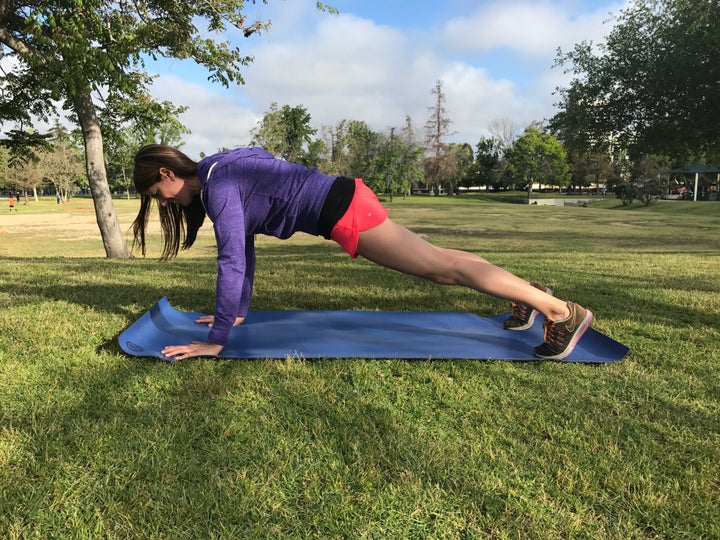
Planking has become the most popular “core” exercise in the fitness industry. There are plank challenges, planks vs. crunches, plank variations and an integration of some yoga moves from plank position into more dynamic movements to increase the demands placed on the core musculature and others along the entire kinetic chain. Planking could be a wonderful way to improve core strength and endurance and overall stability, but it is crucial that planks are executed correctly.
According to physical therapist Dr Slava Shut of Back2Health PT in West Hollywood, “When one planks, (s)he must understand abdominal bracing first before moving into a plank position. Once a person is in a plank, (s)he risks tilting the pelvis forward and disengaging the muscles surrounding the spine which can be counterproductive.”
To Dr Shut’s point, there are ways to baby-step your way into an optimal plank, which is what the program below will attempt to do for you. I have three very important points to consider when executing your planks which should always remain at the forefront of your mind so that you can successfully plank and benefit from it.
1) Master the ability to brace your core muscles first so that when you suspend your spine in space, your core muscles understand activation (contraction) which will thereby protect your lower back from sheer forces.
2) When planking, contract every muscle in the body without holding your breath. Contract your glutes, thighs, lats, belly muscles and energize through your heels to keep your lower extremity engaged.
3) Realize that the muscles of your “core” are the same muscles used for breathing. Your body will choose to breathe over holding your core tight since breathing is an automated system. You will therefore need to learn how to connect your brain to core engagement while continuing your breath work. Because this is very unnatural for the body to do, you will need to practice this until there is a neuromuscular connection.
It is always good to get a qualified coach to look at your form so that you can build up that internal ability to embody an optimal plank. Be patient with learning a new way to feel your body in an active posture and realize that over time you will completely get it and build upon a strong foundation that will eventually aid in all physical activities that you participate in. Let’s jump into a cool way to progress your plank.
1) Dead-bug:

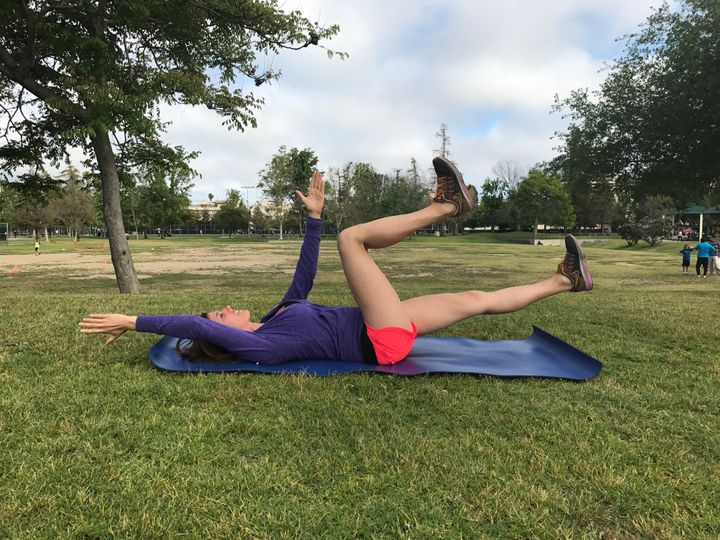
The great thing about dead-bugs is that you have the ground underneath your back, offering you a proprioceptive tool to help gauge if your core muscles are engaged or not. If they aren’t, then your lower back with generally be arched and your pelvis tilted forward. No one should be able to slide a hand under your low back, so pull it down towards the ground. Take your time with dead-bugs to tabletop your legs over the hips, and bring your arms up to the sky, palms facing towards one another. You will lengthen your opposite arm to your opposite leg while keeping your entire trunk musculature engaged. Do not arch your lower back and do not tilt your pelvis. If you do, do not reach your leg forward and as low. Bring it up slightly towards the sky. You will inhale as you lengthen and exhale as you shorten. Alternate between sides performing about 20 reps x 3 sets with a 20 second break.
2) High Plank:
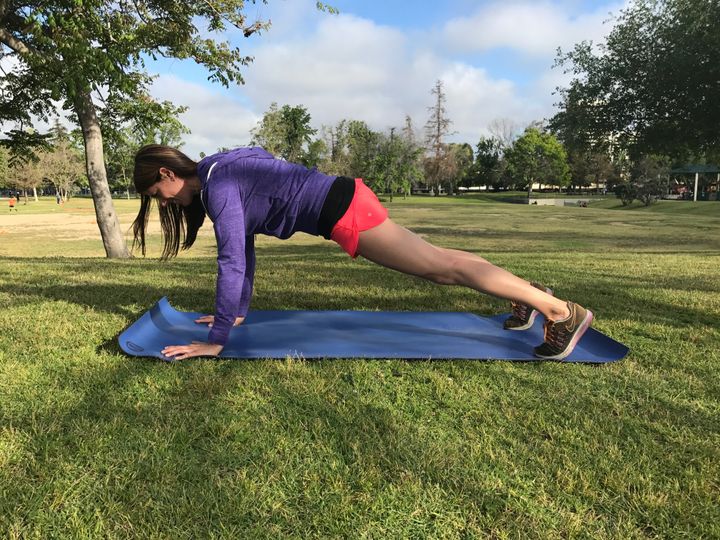
Come onto your hands and ball-mounts of your feet. As soon as you are there, picture a slippery floor and your need to stabilize your entire body from slipping. That feeling of pulling the heels of your palms towards your toes and your toes towards your hands will activate your core musculature. Be sure to tilt your tailbone slightly forward and firm through your thighs. Visualize your shoulders melting away from your ears, towards your back pockets. Keep that isometric hold and breathe. Hold this isometric plank for 30 seconds at a time. Rest for 10 seconds and then perform another 30 seconds 3 times. If you are more advanced, then hold each set for 1 minute.
3) Forearm Plank:

Same exact cues as the High Plank except on your forearms. When you get to your forearms, set your posture up to keep all the muscles contracted. Instead of the hands on a slippery floor, you have a larger surface area for your forearms to engage with the ground to create traction in the shoulder girdle to depress the shoulders away from the ears. Be sure to scan your pelvis and lower back to ensure that your abdominal muscles are firing up. Be sure to also scan your lower extremity as these muscles should be contracting isometrically as well. Hold this isometric plank for 30 seconds at a time. Rest for 10 seconds and then perform another 30 seconds 3 times. If you are more advanced, then hold each set for 1 minute.
4) Planks to Chest Taps (Dynamic Movement):
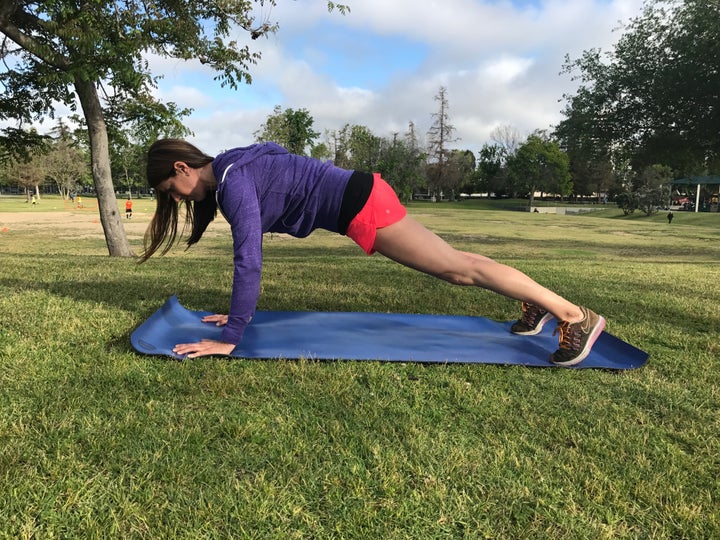
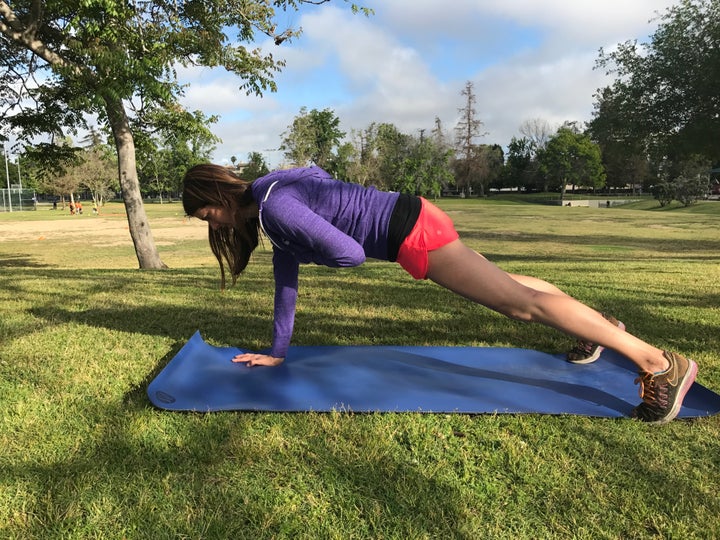
In a High Plank (or Forearm Plank), tap your chest with the opposite hand and hold for a count. Then switch sides. Alternate for a total of 10-20 reps and then rest for 20 seconds. Repeat 3 times. A very important note for this dynamic movement is to ensure your hips remain parallel to the ground. Avoid rotating your hips side to side through the transition from arm to arm.
5) High Plank to Forearm Plank (Movement through levels):
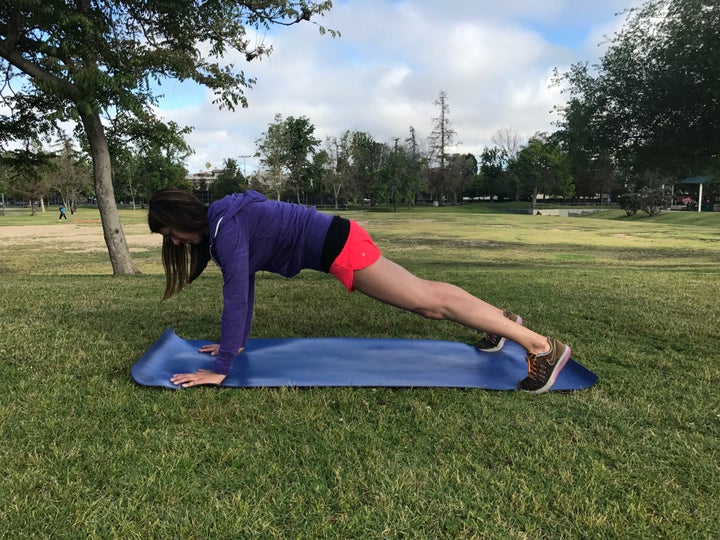
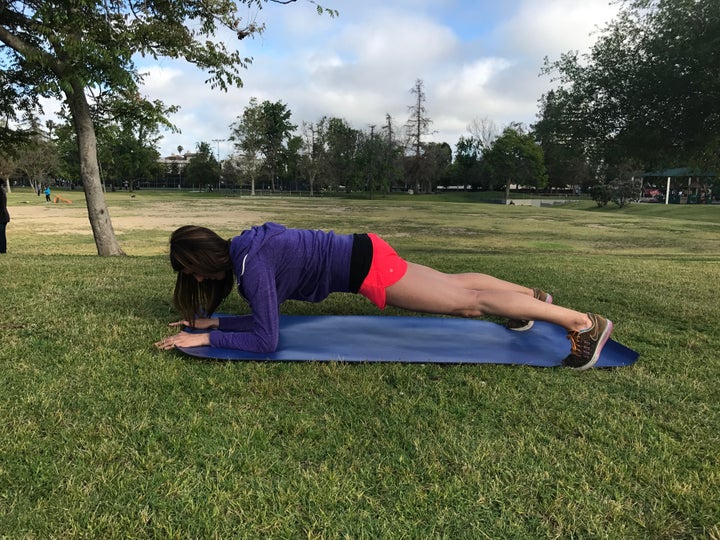
This plank can always be performed on the knees as long as the basics of the mechanics are met. Because this is advanced, be very mindful to master both isometric planks (forearm plank and high plank). The goal is to keep your core engaged to where your hips do not rotate from side to side. You also want to be mindful of keeping your shoulders relaxed and allow the drive to come from your chest and core, decelerating through your back muscles through the range of motion from up to down. The same principles apply when it comes to total body engagement so that your body is supported through total body muscle recruitment. Perform this exercise 10-20 reps and then rest for 20 seconds. Repeat 3 times.
Photo and Video Credits: Superstar Nicole Bloom
